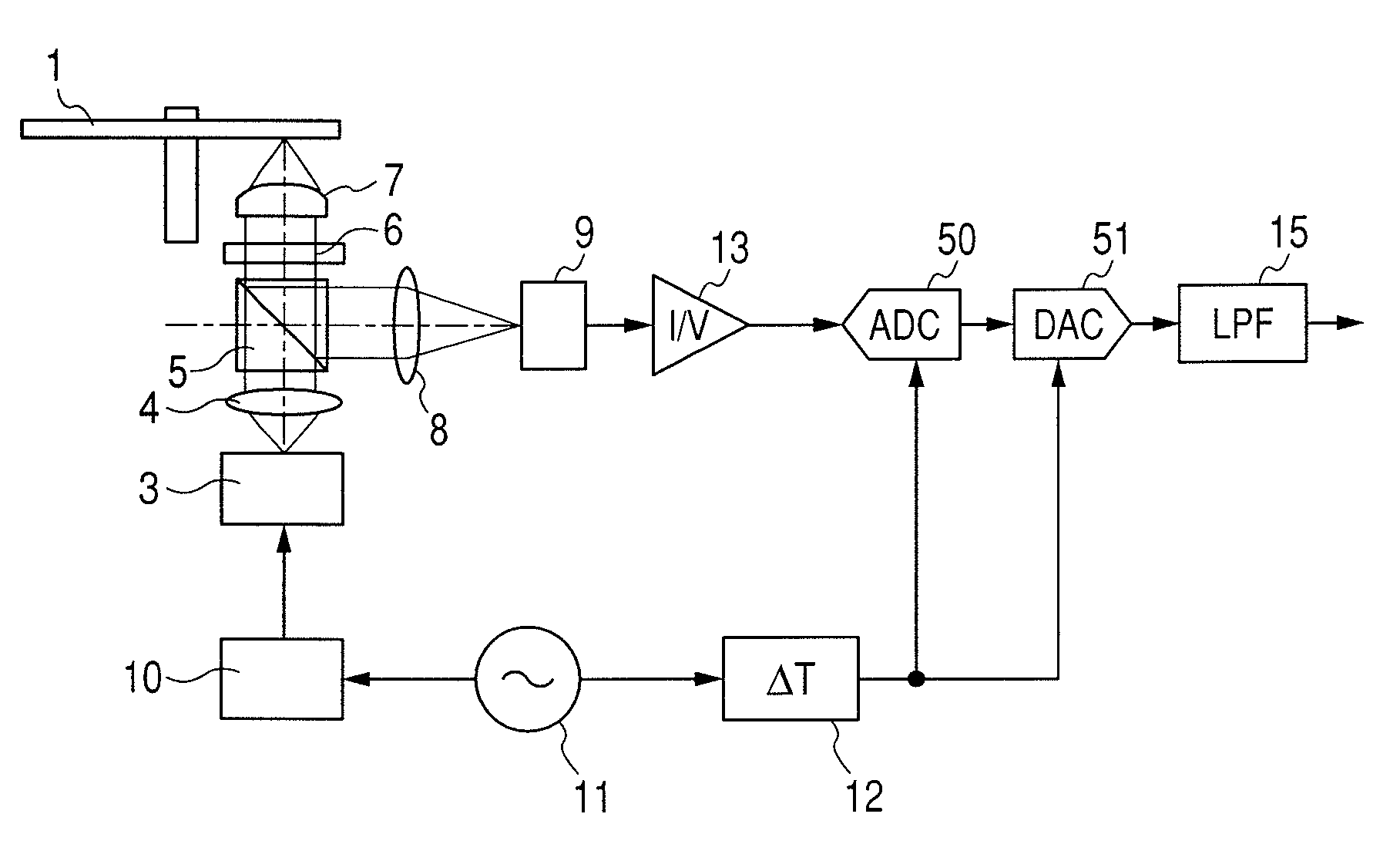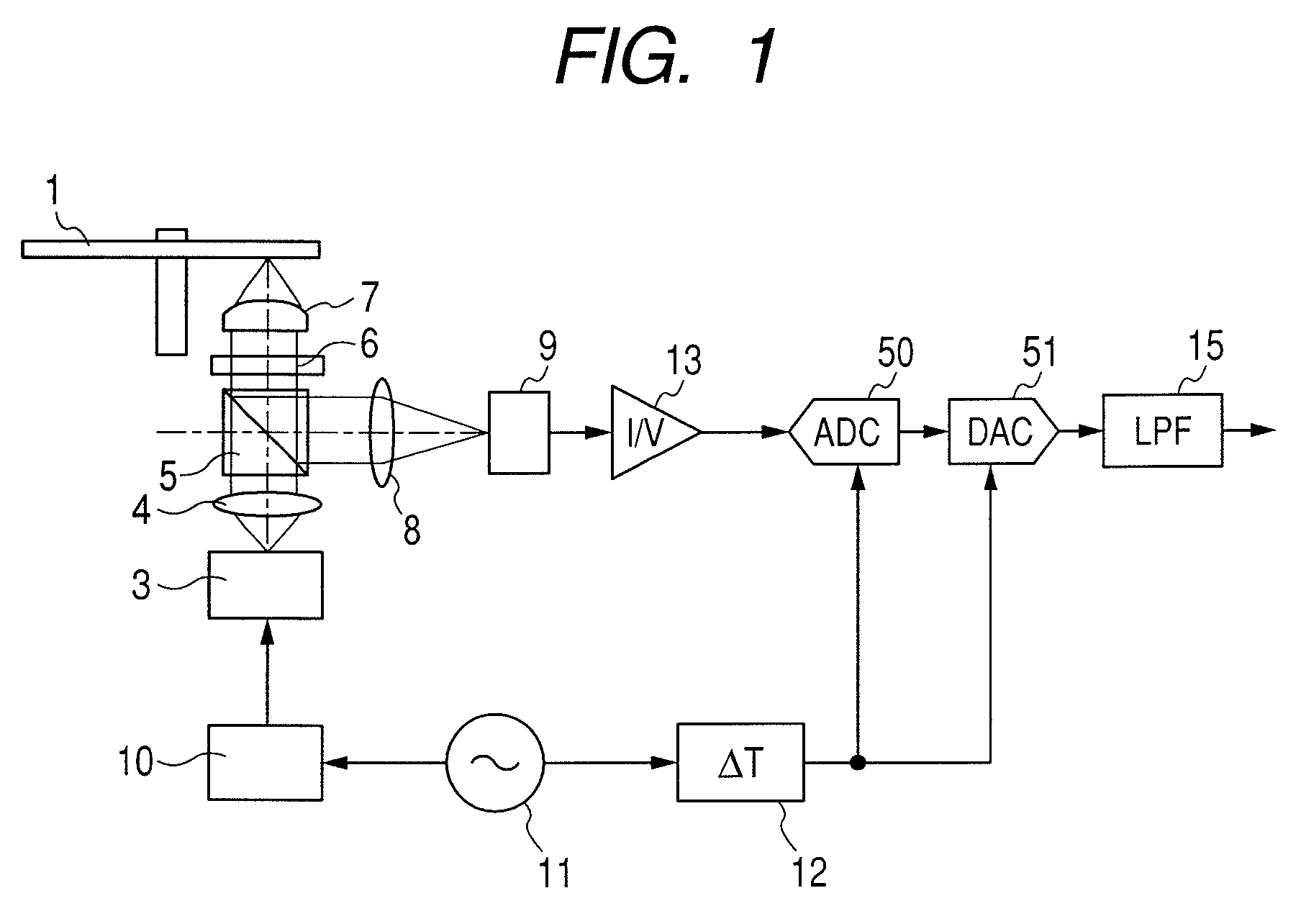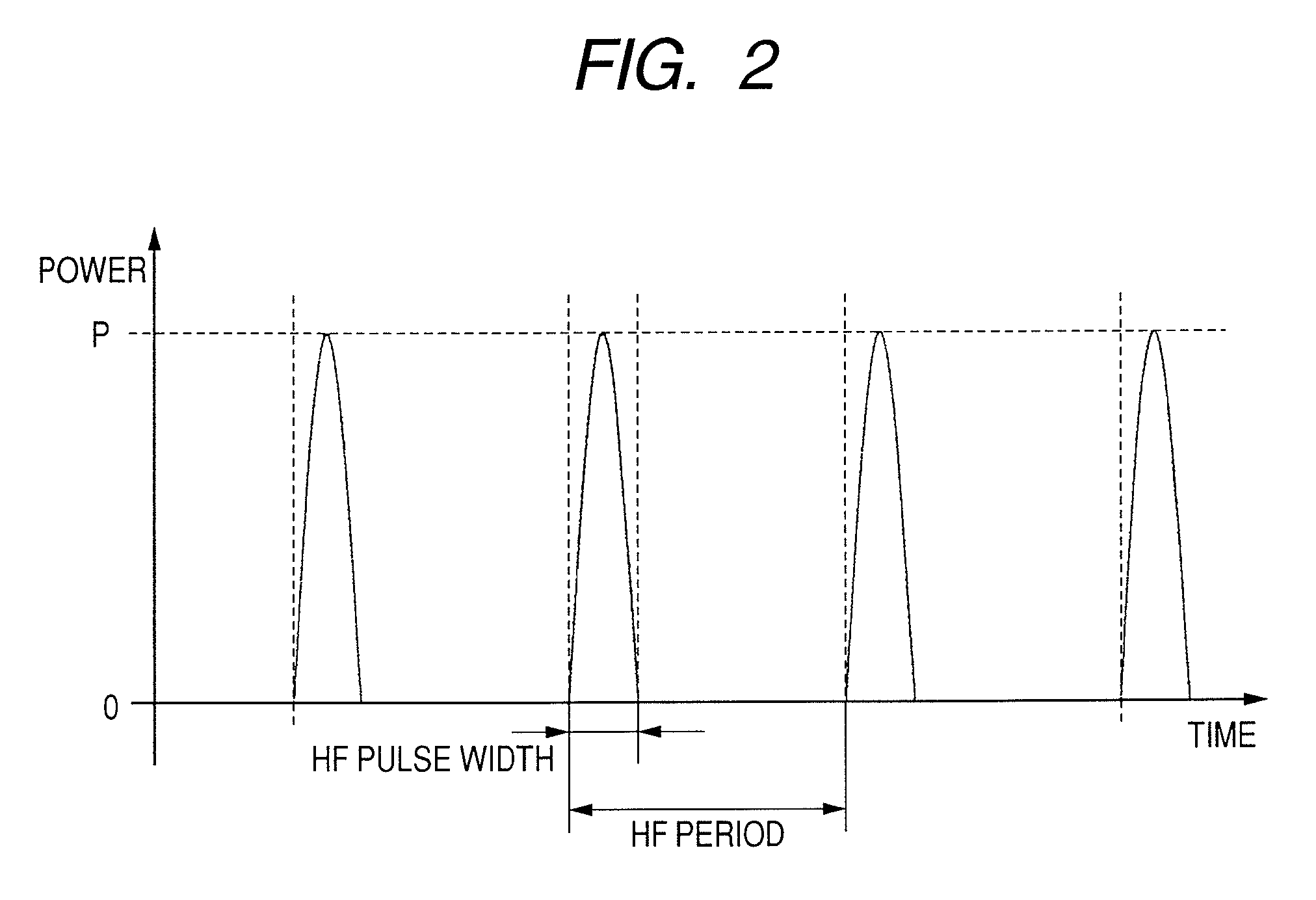Optical disk apparatus
a technology of optical disk and optical disk, which is applied in the field of optical disk apparatus, can solve the problems of system using such a method, deterioration of signal to noise ratio (snr), and difficulty in separating the read signal in the baseband and the higher-order spectrum, so as to prevent snr deterioration, reduce laser noise, and increase read speed
- Summary
- Abstract
- Description
- Claims
- Application Information
AI Technical Summary
Benefits of technology
Problems solved by technology
Method used
Image
Examples
first embodiment
[0037]FIG. 1 is a schematic diagram showing an example of an optical disk apparatus according to the present invention. The schematic diagram mainly illustrates the pickup section of the optical disk apparatus with portions of the optical disk apparatus which are not indispensable for the following description omitted. The present embodiment is characterized in that it uses an analog to digital (AD) converter 50 and a digital to analog (DA) converter 51 to convert a pulse read signal into a continuous waveform signal. The pulse read signal is composed of a train of temporally discrete pulses. The essence of the pulse read signal is in the time of occurrence and the peak value of each pulse. The continuous signal referred to in the present specification refers to a signal which differs from the pulse read signal in that it is not composed of essentially temporally discrete components (pulses) only. The continuous signal as referred to in this specification, therefore, has a broader s...
second embodiment
[0046]FIG. 8 is a schematic configuration diagram of an optical disk apparatus in which laser noise is reduced according to the present invention. The second embodiment is characterized in that: a laser power monitor having a wide bandwidth comparable to the one used in the first embodiment is used; the amplitude of power monitor output is measured using an AD converter; and the measurement result is used to eliminate laser noise.
[0047]A high-frequency (HF) signal to be superimposed is generated at an HF oscillator 11 and inputted to a laser driver 10. The laser driver generates a laser drive current required to obtain a desired average laser power, peak power, and duty, and inputs the laser drive current to a laser diode 3. The laser driver also controls the laser drive current so as to keep the average laser power constant. At this time, the laser diode is pulsed as shown in FIG. 2.
[0048]The laser beam is collimated by a collimator lens 4. Part of the collimated laser beam is, at ...
third embodiment
[0055]When part of a laser beam is branched to the power monitor system, the ratio of the laser beam portion reaching the disk decreases. This does not pose any problem for a read-only apparatus. In the case of a recordable optical disk apparatus, however, it is necessary to secure certain amount of light usable for recording, so that the ratio of the laser beam portion that may be branched to the power monitor system is limited. At the same time, if the laser beam portion branched to the power monitor system is less than required, the SNR (signal to noise ratio) of the signal processed in the power monitor system decreases, for example, on account of amplifier noise and such. This lowers the laser noise elimination accuracy.
[0056]One method of avoiding this problem is to change the division ratio of the beam splitter depending on occasions: recording or reading. Such a method can be realized by using a liquid crystal device. Because liquid crystal devices are slow-response devices,...
PUM
| Property | Measurement | Unit |
|---|---|---|
| HF frequency | aaaaa | aaaaa |
| frequency | aaaaa | aaaaa |
| HF frequency | aaaaa | aaaaa |
Abstract
Description
Claims
Application Information
 Login to View More
Login to View More - R&D
- Intellectual Property
- Life Sciences
- Materials
- Tech Scout
- Unparalleled Data Quality
- Higher Quality Content
- 60% Fewer Hallucinations
Browse by: Latest US Patents, China's latest patents, Technical Efficacy Thesaurus, Application Domain, Technology Topic, Popular Technical Reports.
© 2025 PatSnap. All rights reserved.Legal|Privacy policy|Modern Slavery Act Transparency Statement|Sitemap|About US| Contact US: help@patsnap.com



